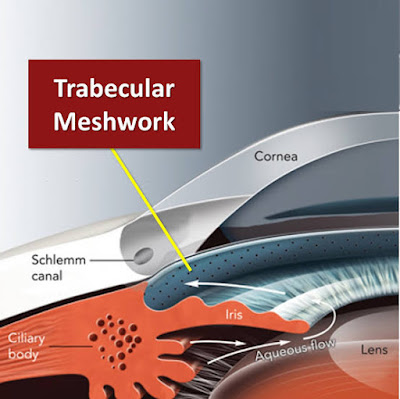Our Eyes have a unique mechanism by which we can even focus the diverging rays coming from a near object on the retina in a bid to see clearly, mechanism called Accommodation.
the accommodation is the ability to increase the refractive power of optical system of eye by changing the shape of lens.
FAR POINT - The farthest point from the eye at which images are clear (at rest of accommodation).
NEAR POINT- The nearest point at which small objects cab be seen clearly .
RANGE OF ACCOMMODATION- The distance between the near point and far point .
AMPLITUDE OF ACCOMMODATION- The difference between the dioptric power needed to focus at near point (P) and to focus at far point (R).
*Far and Near point of the eye vary with the Static refraction of the eye.
*In hypermetropic eye far point is virtual lies behind the eye.
*In myopic eye it is real and lies in the front of the eye.
*In emmetropic eye , far point is Infinity and near point varies with age , 7 cm at age of 10 yrs, 25 cm at age of 40 yrs, 33 cm at age of 45 yrs.
Level of Amplitude of Accommodation at different ages-
- Adolescents have 12-16 D of accommodation.
- Adults have 4 D at the age of 40 yrs.
- After 50 yrs of age accommodation reduces at 2 D.
DEPTH OF FIELD - When an object is accurately focused monocularly , the object somewhat near and far are also seen clearly without any change of accommodation, range of distance from the eye in which an objet appears clear known as Depth of field.
DEPTH OF FOCUS - The range at the retina in which an optical image may move without impairment of clarity is known as Depth of focus.
MECHANISM OF ACCOMMODATION :-
The process of accommodation is achieved by a change in the shape of the lens.
THE RELAXATION THEORY (Helmholtz theory)- The relaxation theory also known as capsular theory , most widely accepted .
- When the eye is at rest (unaccommodated) the elastic substance of young lens is compressed in its capsule by the tension of the zonules. The surfaces of the compressed lens are curved and it changes the dioptric power of the crystalline lens.
- When zonules are kept under tension by a pull executed on them by the elastic choroid.
- Contraction of the ciliary muscle causes the ciliary ring to shorten and move forward the equator of the lens. as a result, the zonules are relaxed, the tension on the capsule is relieved and the lens attains a more spherical shape.
OCULAR CHANGES IN ACCOMMODATION :-
1- Changes in Zonules - They slacken during accommodation due to contraction of ciliary muscle.
2- Changes in Lens -
- Changes in the curvature of lens.
- Anterior Pole of the lens moves forward carrying the iris with it.
- Axial thickness of the lens is increased owing to forward movement of the Anterior pole.
- Changes in the tension of lens capsule
- Lens sinks down .
3- Other changes-
- Pupillary constriction and convergence of eyes.
- Choroid is stretched forward by the ciliary muscle contraction.
- Ora serrata moves forward 0.05 mm with each diopter of accommodation.
STIMULUS FOR ACCOMMODATION - Important stimulus are as follows-
- Apparent size and distance of object.
- Image blur.
- Chromatic Abberrations.
- Scanning movement of the eye.
- Oscillation of Accommodation.
REACTION TIME:- It is refers to the time lapse between the presentation of an accommodative stimulus and occurrence of the accommodative response.
- Average reaction time for 'far-to-near' accommodation is 0.64 sec.
- Average reaction time for 'near-to-far' accommodation is 0.56 sec.
- Reaction time of convergence response is about 0.20 sec.



































